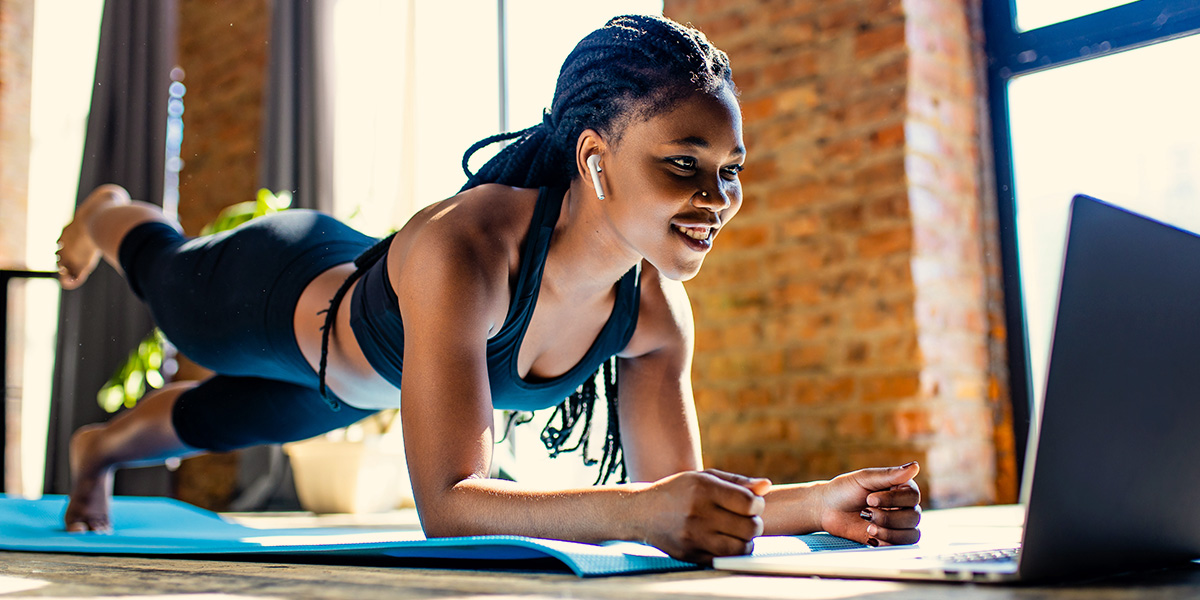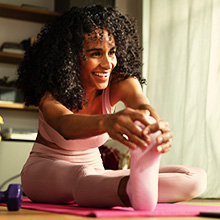It can be challenging to fit exercise into your day if you’ve got a busy schedule. But the truth is you don’t need a lot of time to stay active. You also don’t need to spend money on classes or equipment.
Experts recommend adults get a minimum of 150 minutes a of moderate-intensity aerobic activity per week. That’s a little more than 20 minutes a day. They also recommend doing strength training that works the major muscle groups at least two days a week. But there are other ways to boost your physical activity outside of regular workouts.
How to fit more exercise into your day
Here are a few simple and cost-effective ways to add activity into your day-to-day routine:
1. Set an alarm or a timer once an hour to remind yourself to stand up
It’s important to change your position and posture because it promotes a healthy metabolism.
2. When on the phone, try to walk around (if possible!)
Moving your body is key. This helps reduce tension in the muscles.
3. Re-energize with an activity during your lunch break
This can be anything from a walk or a bike ride outside to a short yoga session. Do what makes you feel good!
4. Get fit with friends
Instead of going to the usual dinner or drinks with friends, suggest something active. This could be a hike, a game of tennis or golf. You could also try a dance or yoga class together.
5. Take the scenic route
You’ll get more exercise in if you ride your bike instead of driving. Try parking your car further away in the parking lot or getting off the bus or subway a stop early.
6. Get moving during TV time
Don’t have a treadmill or stationary bike? Walk or jog in place or lift weights while you watch your favourite shows.
Stretches to counteract sitting
If you’re sitting at a desk all day, you may notice stiffness or pain in your joints and muscles. Here are some simple exercises that you can do at your desk to help:
Neck & shoulders:
- Grab onto the edge of your desk with your elbows bent. Now pull the desk back towards you in the direction of your elbows. During this movement, try to focus on bringing your shoulder blades together and down and hold. Make sure not to lift your shoulders up.
Back & hips:
- Performing a seated “cat/cow” exercise will help move your spine after being in one position for a long time. You can do this by alternating between arching and curving your spine. Make sure to use your entire spine, including your neck.
- You can activate your deep core muscles from a seated position at your desk. This will help bring some stability to your spine. Find a neutral spine position. This is the position when all three curves of your spine (neck, mid-back, low back) are under the least amount of stress and in proper alignment. This is what people often refer to as “good posture”. In this position, press your hands down on your desk. You should feel a muscle contraction in your abdominal area.
Do these exercises for 30 seconds when you start to feel pain or discomfort. You can repeat these as many times as you need throughout your day.
Changing up your workspace at home
Work from home and not sure if you’ll have the time or motivation for that? A good alternative is to invest in your workspace setting. A standing desk will encourage you to stay active during the day. However, it’s important to be mindful of your posture if you are standing for long periods of time.
If you prefer sitting, you can try an exercise ball. Swap that out throughout the day for your regular chair. Having this type of seating will force you to maintain a minimum level of muscle contraction. This can help ease or prevent future aches and pains.
Experiencing pain when you’re working during the day? Speak to a health-care provider who can assess and advise you before making any changes to your routine. If they encourage you to increase your activity level, consider that as a great place to start.





